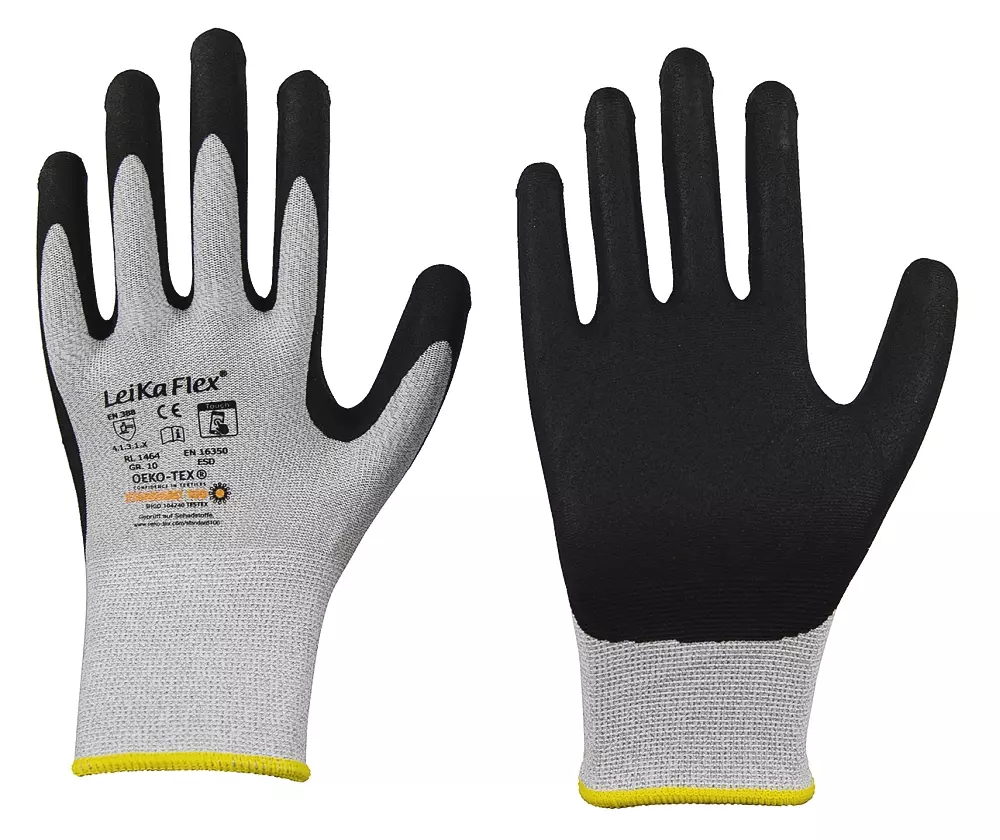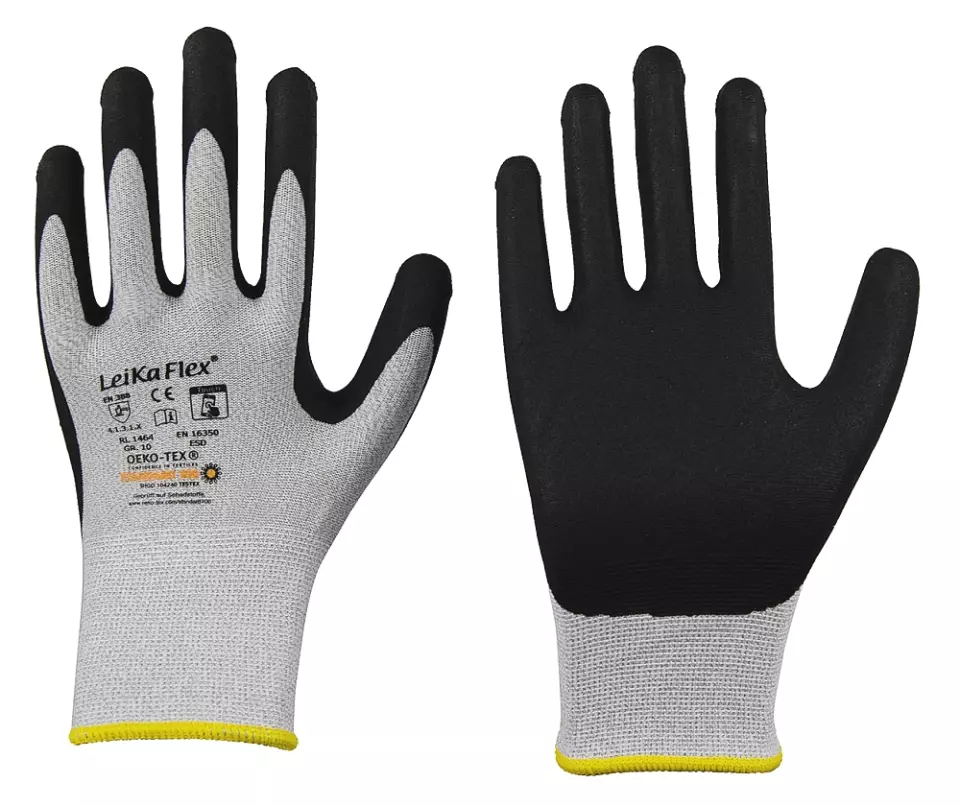
Features You'll Love

Cuff Style · Knit
Determines how the glove secures around the wrist, affecting fit, comfort, and protection coverage at the wrist area.

Coating Material · Nitrile foam
The substance applied to glove surfaces to enhance grip, durability, and protection, with different materials suited for various work conditions.

EN 388 · Abrasion Resistance Level 4, Tear Resistance Level 3, Puncture Resistance Level 1
Offers the highest level of protection against intense rubbing and wear from rough materials.
Offers strong resistance against ripping, making the material durable against snags and tears.
Provides basic protection against punctures from blunt objects like splinters, not sharp points like needles.
Richard Leipold
LeiKaFlex TOUCH ESD Glove with Nitrile Foam Coating, 144 pairs
LeiKaFlex TOUCH ESD Glove with Nitrile Foam Coating, 144 pairs
4.6 / 5
305,27 €
Price per 12 packages (144 pairs)
2,12 € / pair
Choose size
Free delivery
Features You'll Love

Cuff Style · Knit
Determines how the glove secures around the wrist, affecting fit, comfort, and protection coverage at the wrist area.

Coating Material · Nitrile foam
The substance applied to glove surfaces to enhance grip, durability, and protection, with different materials suited for various work conditions.

EN 388 · Abrasion Resistance Level 4, Tear Resistance Level 3, Puncture Resistance Level 1
Offers the highest level of protection against intense rubbing and wear from rough materials.
Offers strong resistance against ripping, making the material durable against snags and tears.
Provides basic protection against punctures from blunt objects like splinters, not sharp points like needles.
Product description
The 15gg carrier glove is suitable for use in ESD areas and is certified as electrostatically dissipative in accordance with EN 16350:2014. It consists of a seamless fine-knit fabric made of nylon and carbon and enables excellent operation of devices with touchscreens. The coating offers a very secure grip and the flexible finish also makes it very comfortable to wear. The fit is perfect and the breathable black nitrile microfoam coating complies with EN 388:2016: Level 4.1.3.1.X and EN 16350:2014 as well as the OEKO-TEX® Standard 100.